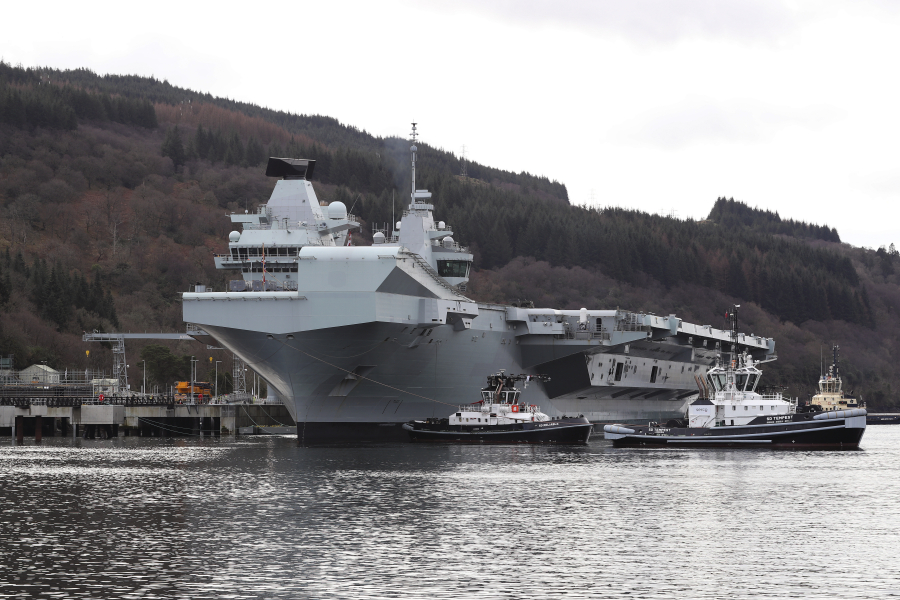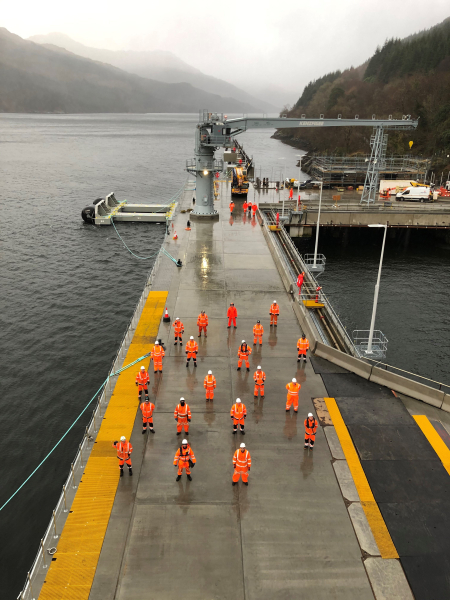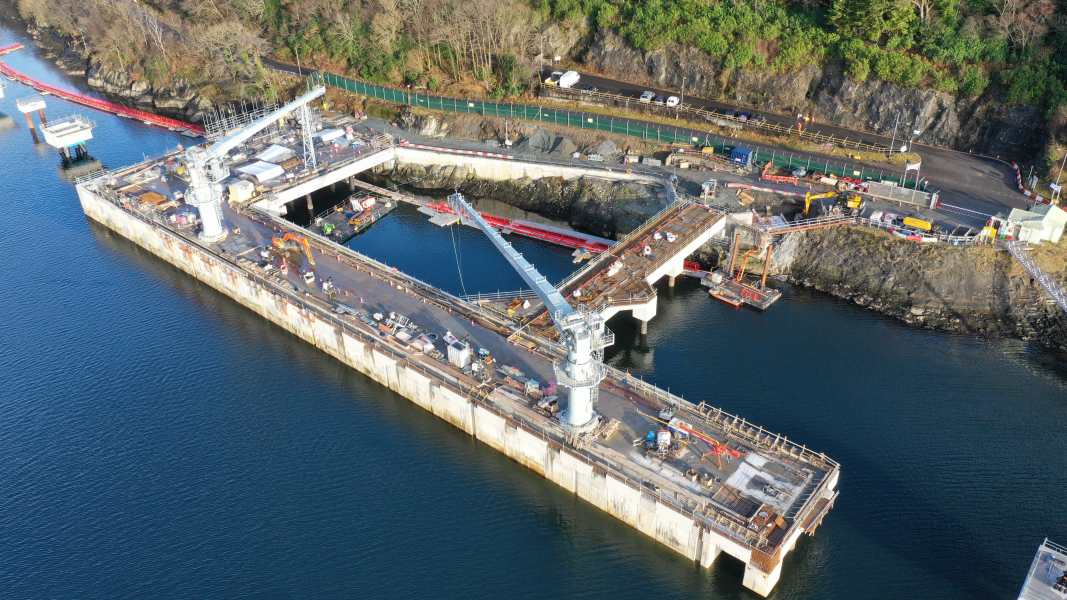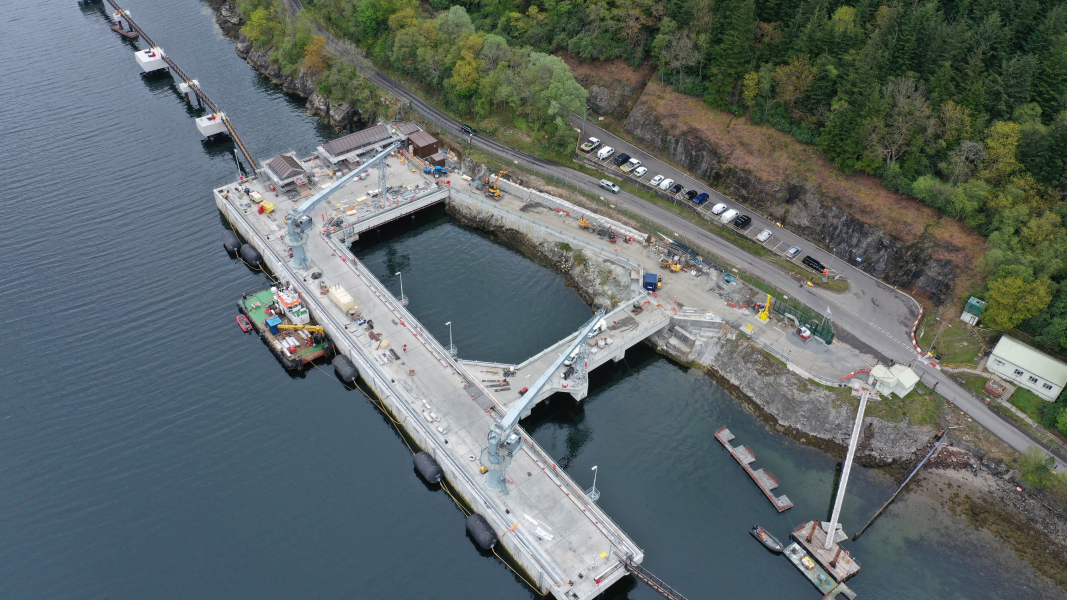HMNB Clyde Northern Ammunition Jetty – New jetty at Glen Mallan, Scotland
The Northern Ammunitioning Jetty at Glen Mallan, on the shores of Loch Long in Scotland, was the third and final jetty refurbishment to support the nationally critical £7bn Queen Elizabeth Class (QEC) aircraft carriers programme.
Purpose
The purpose of the scheme, was to extend the design life of the existing facility by 50 years and build a new 135m long jetty, capable of meeting the needs of the British Naval surface fleet including the Queen Elizabeth and Prince of Wales Aircraft Carriers.
What we did
The new jetty was originally scheduled to be ready for the second carrier coming into service by December 2021. As the scale of the vessel’s first deployment in April 2021 ramped up, alternative methods of storing ammunition on board became increasingly impractical. The client’s project team was therefore challenged with delivering this jetty nine months ahead of the original December 2021 critical in-service date.
Capitalising on our experience of reconstructing two jetties for the carriers at HMNB Portsmouth, we were selected for early design activity. A truly collaborative approach at this early stage, meant everyone understood the timeline compression challenge, the associated cost, schedule pressures and the need for a safer and more efficient end structure.
The design was substantially mature and long-lead piles and plant were forward booked by the time we entered our design and build contract. Within three months, the whole project team was in place and site works commenced on schedule. Online camera feeds and near-real-time management information was in place from the start, which allowed the whole team to move almost seamlessly and safely, into the initial COVID-19 restrictions with high confidence and barely a ripple in the delivery schedule.
We installed 127 steel piles into the seabed, working 24-hours a day, six days a week. They were drilled out to allow concrete to be poured, creating a bond between the bedrock and the pile. The piles support the new jetty’s reinforced concrete deck and walkways.
We also installed buildings and infrastructure on the jetty, including a firefighting system, backup generators and prefabricated modular buildings. We designed and installed two modern pedestal cranes, to exact military standards, that load ammunition onto vessels safely and efficiently. Two modular fender spacer units have been specifically fabricated for the Queen Elizabeth Class aircraft carriers, that move with the tide and prevent the carriers’ overhanging flight decks from colliding with the jetty. Four monopile navigational markers that we installed, guide the carriers and other vessels on their approaches to the jetty. We also dismantled the jetty’s predecessor.
©UK Ministry of Defence CROWN COPYRIGHT, 2021.
Project successes
On 15th March 2021, the Queen Elizabeth Class aircraft carrier sailed along the Firth of Clyde and berthed at the new Northern Ammunition Jetty for the first time. Meeting this crucial date was a huge achievement for the entire project team that showed engineering ingenuity, hard work, and true collaboration to deliver the £64m facility under target cost.
The project won ‘Best Infrastructure Project’ at the Scottish Civil Engineering Awards 2021, and ‘Upgrade and Renewal Project’ at the British Construction Awards 2021. It was also a finalist in the Construction News Awards 2021 for ‘Best Large Project over £50 million.’
Royal Navy Captain Iain Greenlees, QEC Infrastructure Director: “Delivered under target cost and with the final batch of concrete poured one week ahead and safety licence established three days ahead of the HMS Queen Elizabeth’s planned arrival, the high expectation built up through the construction period en route to this critical milestone was surpassed by the ease with which ammunition movement and supply was enabled, releasing the ship into its final days of deployment ahead of programme."
"The legacy of the project team’s delivery has set a new benchmark for future collaborative working on complex Defence Maritime projects.”
Royal Navy Captain Iain Greenlees QEC Infrastructure Director



